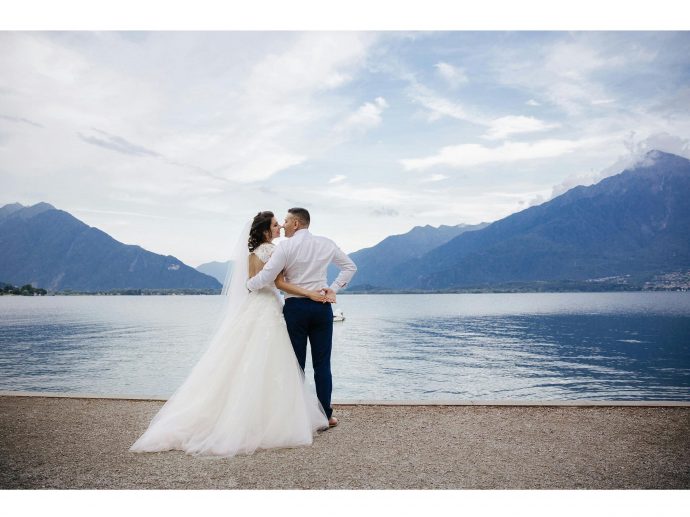Categories more
- Adventures (17)
- Arts / Collectables (15)
- Automotive (37)
- Aviation (11)
- Bath, Body, & Health (77)
- Children (6)
- Cigars / Spirits (32)
- Cuisine (16)
- Design/Architecture (22)
- Electronics (13)
- Entertainment (4)
- Event Planning (5)
- Fashion (46)
- Finance (9)
- Gifts / Misc (6)
- Home Decor (45)
- Jewelry (41)
- Pets (3)
- Philanthropy (1)
- Real Estate (16)
- Services (23)
- Sports / Golf (14)
- Vacation / Travel (60)
- Watches / Pens (15)
- Wines / Vines (24)
- Yachting / Boating (17)
Capturing Forever: What Makes a Great Wedding Photography Experience From Start to Finish
Published
06/16/2025A wedding is more than a ceremony; it’s a heartfelt story unfolding in real time that deserves to be captured with care, clarity, and creativity. While every couple dreams of timeless wedding photos, few realize that achieving a memorable photography experience involves far more than just snapping pictures. It’s about the process—how the photographer collaborates, prepares, adapts, and delivers. We will explore the key elements contributing to a great wedding photography experience, from the first meeting to the final gallery.
A thoughtful approach, open communication, and genuine human connection are essential in creating lasting memories. Whether it’s a small backyard ceremony or a grand event hall celebration, these elements work behind the scenes to ensure that couples receive photographs that reflect their unique journey, not just poses and settings. Let’s walk through the stages that define this unforgettable experience.
Essential Elements of a Seamless Wedding Photography Journey
1. Connection Starts with Conversation
The process begins with a conversation before any contracts are signed or dates are locked in. This initial meeting is crucial, as it sets the tone for everything that follows. Couples aren’t just hiring someone to take pictures—they’re choosing someone to be part of deeply personal moments throughout one of the most meaningful days of their lives. This is why a photographer’s ability to listen, understand, and empathize becomes just as important as their technical skills. Discussing the couple’s story, vision, values, and even what they fear about the day allows the wedding photographer in Las Vegas to align their style and approach.
During this stage, clarity on expectations is established—how many hours of coverage, who the important family members are, what events cannot be missed, and the overall mood or aesthetic desired. Building trust in this early stage paves the way for a smoother, more collaborative experience, reducing stress and setting the foundation for memorable images.
2. Thoughtful Planning and Pre-Wedding Coordination
Once the foundation is built, the next stage involves planning—vision becomes reality. A detailed timeline is created with input from the couple and often in coordination with the wedding planner or venue staff. From the getting-ready shots to the final send-off, a clear plan ensures no moments are overlooked. Location scouting may also take place during this stage. Photographers often visit the venue in advance to understand lighting conditions, identify ideal photo spots, and anticipate any logistical challenges.
If the couple plans a first look or specific portrait sessions, the photographer helps structure those into the day’s flow without disrupting the natural rhythm of events. Another important element at this stage is finalizing a shot list. While creativity thrives in spontaneity, having a checklist of must-have images, like heirloom family portraits or cultural rituals, ensures that meaningful details are captured. Preparation here means the photographer arrives confident and ready to focus on emotion, not logistics.
3. Presence and Adaptability on the Wedding Day
When the day arrives, the value of preparation becomes evident—but what truly makes a difference is the photographer’s presence and adaptability. A great photography experience isn’t just about being in the right place at the right time; it’s about being attuned to the day's energy. The photographer must remain observant and responsive, whether it’s calming a nervous bride, navigating unexpected weather changes, or discreetly handling difficult lighting.
Weddings rarely unfold exactly as planned, and a calm, problem-solving demeanor goes a long way. Another key part of the photographer’s role is blending in—knowing when to step back during intimate moments and when to step forward to direct group portraits. The ability to read a room and move fluidly through the day while capturing genuine emotion separates a decent photo collection from a deeply meaningful one. This stage concerns trust and presence, which is only possible when the earlier stages are handled with care.
4. Thoughtful Editing and Storytelling in Post-Production
The work is far from over once the vows have been exchanged and the last dance has ended. The post-production phase is where raw images are transformed into a cohesive story. This stage is both technical and artistic. Beyond basic edits like lighting adjustments and cropping, the photographer curates a gallery that flows naturally, highlighting not just key events but the emotion and atmosphere of the day. Each photo is evaluated for its composition, relevance, and contribution to the overall narrative. Some photographers take a documentary-style approach, while others may include more fine-art elements, depending on the earlier conversations with the couple.
This is also when images are formatted into different versions—print-ready files, web-optimized versions, and sometimes album drafts. Timeliness matters, too. While editing takes time, couples appreciate regular updates and transparency about when to expect their gallery. The goal is to deliver a folder of files and a carefully assembled collection that feels like a living memory.
A remarkable wedding photography experience is not defined solely by camera equipment or trendy editing styles. It’s a journey that begins with genuine connection and unfolds through thoughtful planning, quiet presence, and artistic storytelling. It’s about preserving emotion, honoring memories, and building a relationship rooted in trust and shared vision. The lasting value of great wedding photography lies in what is captured and how the couple feels throughout the process. Attention to detail and a commitment to the couple’s story make the experience as meaningful as the images.















